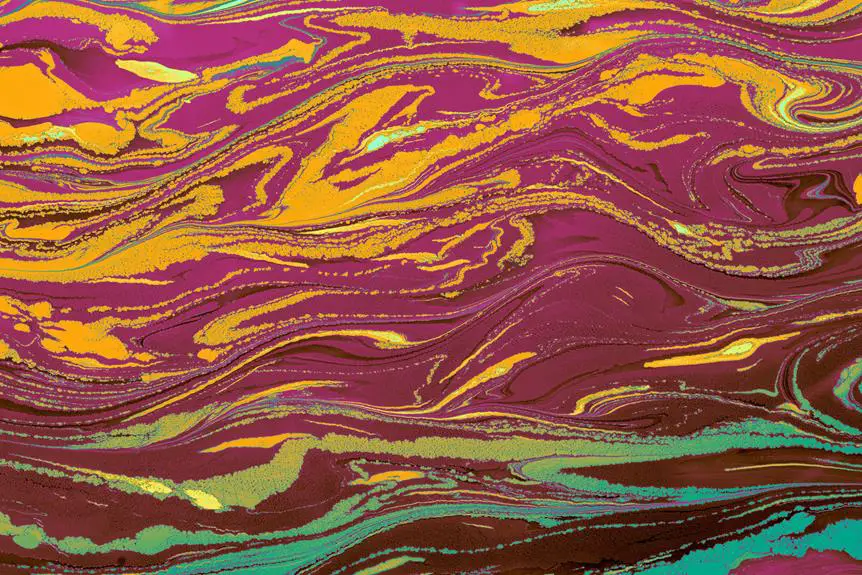Are you tired of finding the perfect sweater, only to discover it's unbearably itchy? The fabric debate around acrylic sweaters has left many scratching their heads. But fear not, as we delve into the truth behind this contentious issue.
In this guide, we'll explore the history of acrylic fabric, its characteristics, and the pros and cons of acrylic sweaters. We'll also debunk common myths and provide tips for minimizing any itchiness.
Whether you're a seasoned fashion aficionado or just starting to master the art of sweater selection, this comprehensive overview will equip you with the knowledge needed to make informed choices about your wardrobe.
Key Takeaways
- Acrylic sweaters provide a soft and comfortable fit, making them versatile and suitable for various occasions.
- Despite some cons and myths, acrylic sweaters can be durable and long-lasting with proper care and maintenance.
- There are alternatives to acrylic sweaters, such as cotton blends or wool blends, that offer low-itch options and luxurious alternatives.
- Investing in high-quality cashmere sweaters can provide exceptional softness and lightweight warmth without itchiness.
The History of Acrylic Fabric
When did acrylic fabric first become commercially available for sweater production?
The history of acrylic fabric dates back to the mid-1940s when it was first developed as a synthetic alternative to wool. This innovation in fiber production was a response to the increasing demand for affordable and easy-to-maintain textiles.
Acrylic fabric's popularity soared in the 1950s and 1960s due to its versatility and low cost. The production of acrylic fibers allowed for the creation of a wide range of clothing, including sweaters, that mimicked the warmth and softness of wool without the associated high costs and maintenance.
The ability to dye acrylic fibers in a variety of colors was another factor that contributed to its widespread use in the fashion industry. As a result, acrylic fabric became a staple in the garment industry, offering consumers an alternative to natural fibers.
This history of innovation in acrylic fabric production has significantly impacted the fashion industry, providing consumers with a durable, affordable, and easy-to-care-for alternative to traditional wool sweaters.
Characteristics of Acrylic Fibers
Acrylic fibers are known for their softness and lightweight feel, making them a popular choice for sweater production. If you've ever wondered what makes acrylic sweaters so comfortable to wear, the characteristics of acrylic fibers provide some insight into their appeal.
- Acrylic Fiber Properties: Acrylic fibers are incredibly soft, making them gentle on the skin and comfortable for extended wear. Additionally, they're lightweight, providing warmth without feeling heavy or cumbersome.
- Manufacturing Process: Acrylic fibers are created through a manufacturing process that involves the conversion of acrylonitrile, a petroleum-based product, into fibers. This process allows for the production of fibers that closely mimic the softness and warmth of natural wool.
- Wearing Experience: When wearing acrylic sweaters, you'll notice that they aren't only soft and lightweight but also have excellent draping qualities, making them versatile and easy to wear for various occasions.
Understanding the fabric composition and care instructions for acrylic sweaters can enhance your wearing experience, ensuring that you can enjoy their comfort and softness for a long time. Additionally, it's important to consider the environmental impact of acrylic fibers, as they're synthetic and have specific considerations for sustainability.
Pros of Acrylic Sweaters
Experiencing the softness and comfort of acrylic sweaters is a major advantage when considering your wardrobe options. Acrylic sweaters offer a soft texture that feels gentle against your skin, making them a delightful choice for everyday wear. Their comfortable fit ensures that you can move freely without feeling restricted, adding to the appeal of these garments. Here's a visual representation of the pros of acrylic sweaters:
| Pros of Acrylic Sweaters | |
|---|---|
| Soft Texture | Comfortable Fit |
The soft texture of acrylic sweaters provides a luxurious feel, creating a pleasant sensation when worn. This makes them a fantastic option for those who prioritize comfort without compromising on style. Additionally, the comfortable fit of acrylic sweaters ensures that you can confidently go about your day, knowing that you are both snug and chic. Whether you're relaxing at home or heading out for a casual outing, the softness and comfort of acrylic sweaters make them an appealing choice for any wardrobe.
Cons of Acrylic Sweaters
The discomfort of itchiness can be a drawback of acrylic sweaters for some wearers. While acrylic sweaters have their benefits, it's important to consider the cons before making a purchase. Here are some drawbacks to be mindful of:
- Prone to Pilling: Acrylic fibers can be prone to pilling, leading to a worn-out appearance over time, which may not be as durable as other sweater materials.
- Less Breathable: Acrylic sweaters are less breathable compared to natural fibers like wool or cotton, which can lead to discomfort, especially in warmer climates.
- Potential for Static: Acrylic fibers have a tendency to generate static electricity, causing the sweater to cling to the body and potentially leading to discomfort.
Considering these drawbacks, it's worth exploring alternatives to acrylic sweaters such as merino wool or cashmere, which offer warmth without the itchiness. Additionally, incorporating itchiness prevention techniques like wearing a breathable undershirt or using fabric softener when washing acrylic sweaters can help mitigate potential discomfort.
Common Myths About Acrylic Fabric
You've probably heard that acrylic fabric is always itchy, but that's not necessarily true. In fact, acrylic can be quite soft and comfortable to wear.
Additionally, many people underestimate the versatility and durability of acrylic fabric.
Acrylic Isn't Always Itchy
Acrylic fabric often gets a bad rap for being itchy, but in reality, it's not always the case. There are several factors that can contribute to the misconception that all acrylic fabric is uncomfortable against the skin. It's essential to understand that the itchiness of acrylic fabric can be mitigated by various measures.
Here are some common myths about acrylic fabric:
- Fabric softeners, when used properly, can effectively reduce the itchiness of acrylic fabric.
- Skin sensitivity is a complex issue and may have various potential causes, including individual allergies or sensitivities to specific chemicals or dyes.
- The perception of itchiness can also be influenced by the quality of the acrylic fabric and the manufacturing process it undergoes.
Understanding these factors can help dispel the myths surrounding acrylic fabric and provide a more accurate perspective on its comfort level.
Versatility of Acrylic
Despite common misconceptions, wearing acrylic sweaters can be comfortable and versatile when properly cared for and paired with suitable clothing. Acrylic fabric offers numerous benefits that make it a popular choice in fashion trends.
It's lightweight, making it ideal for layering in various weather conditions. Additionally, acrylic is known for its ability to retain color, making it a durable option for long-term wear.
When it comes to caring for acrylic garments, following a few simple tips can maintain their softness and shape. Always check the care label and wash acrylic items in cool water with mild detergent to prevent stretching or pilling.
To ensure maximum comfort, consider layering your acrylic sweater over a thin, breathable base layer to minimize direct contact with the skin.
Durability of Acrylic
While some may believe that acrylic fabric isn't durable, it actually offers long-lasting wear and color retention when properly cared for. Acrylic durability is often underestimated, but with the right maintenance, acrylic garments can withstand regular use and maintain their appearance for an extended period.
To ensure the longevity of acrylic items, follow these maintenance tips:
- Machine wash in cold water with a gentle detergent to prevent stretching or misshaping.
- Avoid using fabric softeners or bleach, as they can weaken the fibers and cause pilling.
- Lay acrylic garments flat to dry to maintain their shape and prevent excessive wear from heat in the dryer.
Tips for Minimizing Acrylic Sweater Itchiness
To minimize acrylic sweater itchiness, try wearing a breathable cotton undershirt underneath. This can create a barrier between your skin and the acrylic fabric, reducing the itchiness. Additionally, following proper fabric care techniques can also help minimize itchiness and maintain the quality of your acrylic sweaters.
Here are some tips for minimizing acrylic sweater itchiness:
| Tip | Description | Benefits |
|---|---|---|
| Choose high-quality acrylic sweaters | Opt for sweaters made from premium acrylic fibers that are softer and less likely to cause itchiness. | Enhanced comfort and durability. |
| Wash with gentle detergent | Use a mild, hypoallergenic detergent when washing acrylic sweaters to prevent skin irritation. | Reduced risk of itchiness and skin sensitivity. |
| Air dry your sweaters | Avoid using the dryer and instead air dry your acrylic sweaters to maintain their softness and reduce the risk of itchiness. | Preserved fabric quality and minimized irritation. |
Following these tips can help you enjoy the benefits of acrylic sweaters without the discomfort of itchiness, ensuring that you can confidently wear your favorite sweaters all day long.
Alternatives to Acrylic Sweaters
You can explore alternative sweater materials that offer comfort and style without the itchiness often associated with acrylic. When seeking alternatives to acrylic sweaters, consider the following options:
- Cotton Blends: Look for sweaters made from a blend of cotton and synthetic fibers. Cotton is breathable and soft, making it a great choice for those with sensitive skin. The addition of synthetic fibers can enhance durability and shape retention, providing a comfortable and low-itch option.
- Wool Blends: Wool blends offer warmth and softness without the itchiness commonly associated with pure wool. Look for sweaters that combine wool with materials like silk, cashmere, or synthetic fibers. These blends can provide the luxurious feel of wool while minimizing any potential irritation to the skin.
- Cashmere: Consider investing in a high-quality cashmere sweater. Known for its exceptional softness and lightweight warmth, cashmere is a luxurious alternative to acrylic. Look for sweaters made from pure cashmere or blends that incorporate cashmere with other fibers for added comfort and versatility.
Exploring these alternative materials can help you find sweaters that are both comfortable and stylish, catering to your preference for itch-free clothing.
Frequently Asked Questions
Are Acrylic Sweaters Environmentally Friendly?
Acrylic sweaters are not environmentally friendly. Their production involves unsustainable practices and has a significant environmental impact. Sustainable production methods and eco-friendly materials are crucial for reducing the negative effects on the environment.
Can Acrylic Sweaters Be Machine Washed and Dried?
You can machine wash and dry acrylic sweaters for easy fabric care. Follow the washing instructions to maintain durability and prevent shrinkage. This makes acrylic sweaters a practical choice for daily wear.
Are Acrylic Sweaters Prone to Pilling?
To keep your acrylic sweater in good shape, wash it inside out on a gentle cycle and avoid drying it on high heat. This will help prevent pilling and maintain fabric durability for a longer-lasting sweater.
Do Acrylic Sweaters Retain Their Shape Well Over Time?
When caring for acrylic sweaters, it's important to maintain their elasticity. Regularly washing in cold water and air drying will help retain their shape over time. Avoiding high heat and rough handling will also prolong their lifespan.
Are There Any Health Concerns Associated With Wearing Acrylic Sweaters?
Wearing acrylic sweaters may raise health concerns due to potential skin irritation. It's important to consider the fabric's breathability and how it interacts with your skin. Be mindful of any discomfort or reactions.
- A Closer Look at Sanderson’s China Blue Fabric Collection - June 20, 2025
- Understanding the Link Between Louis Vuitton and Fabric Manufacturing in China - June 20, 2025
- The Ultimate Guide to Stretch Chino Twill Fabric - June 20, 2025





